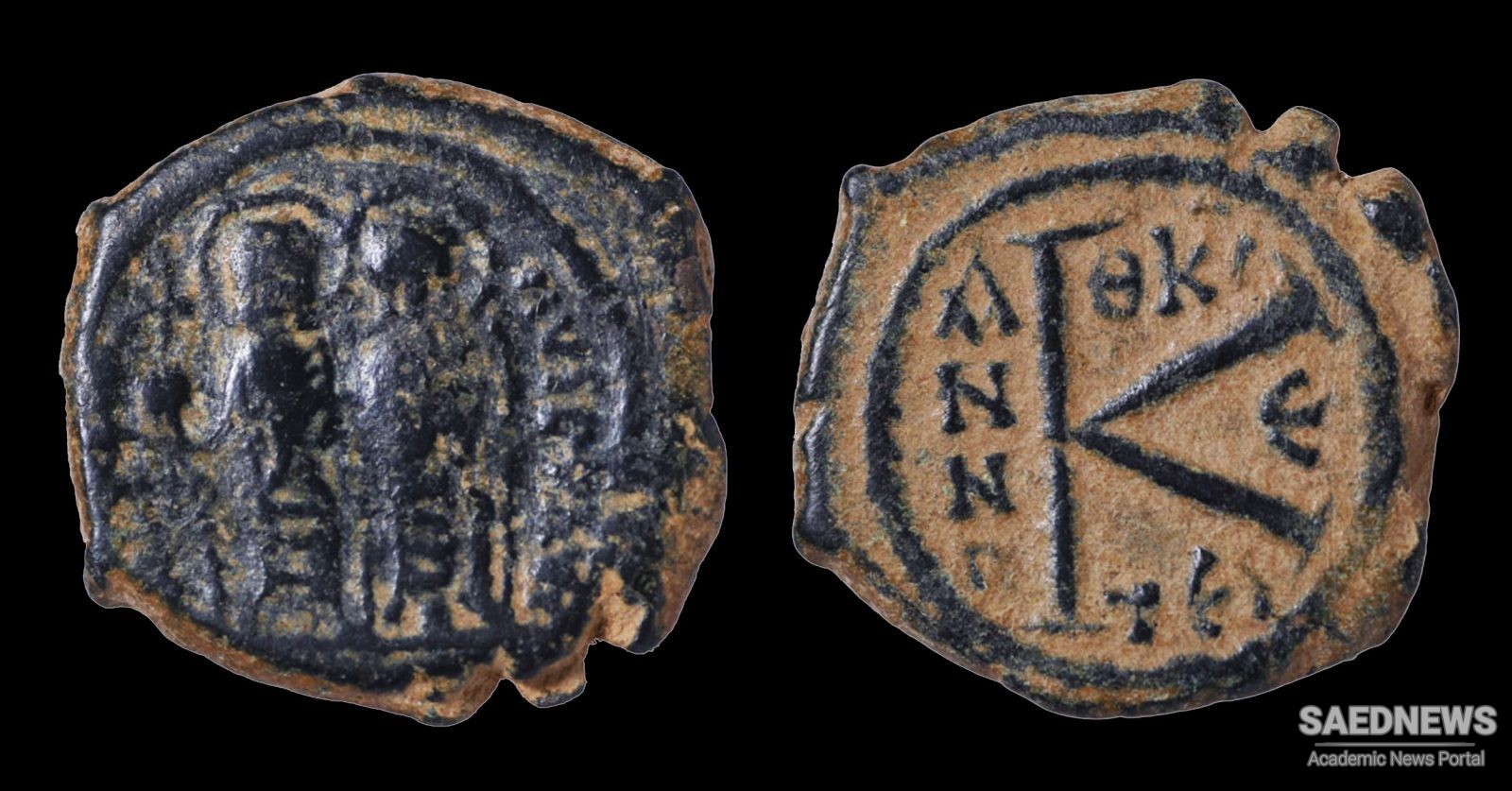He built a fire temple at Dvin, an important town near present Erevan, and he put to death a member of the influential Mamikonian family. The result was an Armenian uprising, and Suren and his guard were massacred in 571. The Armenian rebellion fitted in well with the plans of Justin II. He withheld the yearly payment to Persia for the defence of the Caucasus and he welcomed the Armenian rebels as subjects of the empire. An army was sent into Sasanian territory and the city of Nisibis was besieged in 572. The Byzantines were not able to take the city, but retreated in disorder because of the jealousy of the commanders. The Persians, on the other hand, followed the fleeing Byzantine army and invested the city of Dara in which they had taken refuge. The Persians, after a siege of about five months, received the surrender of the city. Afterwards Persian forces ravaged Syria, and Justin sued for peace.
Justin II had been suffering from a mental illness and became incapable of ruling, so Tiberius, a high Byzantine officer, was named co-ruler in 5 74. A truce for one year was made with Khusrau, whereby Byzantium paid a large sum of money, but Armenia was excluded from the truce. No real conclusion of peace was reached, however, and in 575 Khusrau invaded Armenia. At first success crowned the Persian arms, and it seemed as though the eastern part of the Byzantine empire would be incorporated into the domains of the enemy. The fortunes of war changed, however, and a strong Byzantine army defeated Khusrau and then occupied Sasanian territory, plundering many localities. Consequently the local population, primarily Armenian, suffered from the Byzantines more than they had from the Persians. The Sasanians, losing heart, were now willing to negotiate a peace in 576. A great victory over the Byzantine army in Armenia, however, interrupted negotiations. In essence, the Persians refused to return Dara to Byzantium and insisted that certain Armenian refugees be turned over to them, to neither of which points the Byzantine envoys would agree.
In the warfare of 578, a new Byzantine commander, Maurikios or Maurice, was able to capture several Persian forts and many captives. On the other hand the Armenians had ended their rebellion and a general amnesty from Khusrau brought the land back under Sasanian control. Before peace could be negotiated between the two empires Khusrau died in 579, after a long reign of forty-eight years. The empire which Khusrau ruled was in its glory, but already showing signs of decay in a spirit of pessimism and decadence prevalent among many of its citizens. The rigid class structure, disturbed by the Mazdakites, had been re-established under Khusrau with strong religious sanctions. Although the power of the great families had been curbed, the boundaries between classes resembled the caste system of India. The lower classes were not flourishing. Khusrau, however, became the prototype of the wise, just ruler for later times, so much so that his personal name for many Arabic authors became the common title for the pre-Islamic Sasanian kings. Thus Kisrd, an Arabic deformation of his name, followed the path of Kaiser and Tsar in the European lands, as descendants of Caesar. Even today in Persia the ignorant peasant will ascribe any very old ruin to Kisra Anushlrvan. He built caravanserais, bridges, roads and towns, such that under his reign the empire was linked together as never before. To Khusrau is attributed a long wall and series of forts in the plain of Gurgan, built as a defence against the Turks. He is also supposed to have rebuilt the wall and defences of Darband. It would seem that the walls and fortifications in Gurgan, Mazandaran (from the sea to the mountains near Sari), Darband and Iraq, fitted well with Khusrau's division of the military command in the empire among four army commanders of the four frontiers.


 Ancient Persians and Primal Creation
Ancient Persians and Primal Creation














































